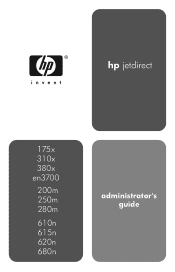

A pre-shared key provides device authentication and is generated when you specify a network passphrase through the psk-passphrase command. NONE: WPA-PSK authentication is not used. (Not compatible with the shared key authentication option in the auth-type command.) WPA-PSK provides enhanced authentication on networks where an authentication server is not used. WPA-PSK authentication and dynamic wi-fi protected access (WPA) encryption. Selecting Shared_Key is not valid with the wpa-auth-type command when setting WPA-PSK authentication. Shared_Key: Use shared key authentication if your network requires that each device be configured with the same secret WEP key for network use. However, your network might use WEP encryption keys for data security. Open (default): Use open system authentication if your wireless network does not require authentication for network use. Link-based authentication method for the print server (before network use is allowed). If the ssid command is issued without an entry (a blank SSID), the desired SSID is assigned, where it associates with the first network that matches its authentication settings. Do not use the SSID hpsetup with the Infrastructure network type. The factory-default SSID is hpsetup in ad hoc mode. Service set identifier (SSID), or network name, for the print server. Infrastructure: The print server communicates on the network with other wired or wireless devices through an access point.Īd Hoc: (default) The print server communicates with other wireless devices directly, without using an access point. Telnet Commands and Parameters Command Description Wireless 802.11 Main network-type When you manually set an IP address, you should also re-set the subnet mask and default gateway.
#Hp jetdirect 170x setup manual#
If a parameter is dynamically provided by a BOOTP or DHCP server, you cannot change its value unless you set Manual configuration. Telnet Commands and Parameters lists the available Telnet commands and parameters. If you enter save instead of exit or quit, you are not prompted to save settings. Indicate whether to save any changes by entering Y (default) for Yes, or N for No. When you have finished setting the configuration parameters, type exit or quit (depending on your system). Repeat the previous step to set any additional configuration parameters. See Telnet Commands and Parameters for configuration parameters. Follow each command entry with Enter (carriage return).


The signifies the configuration parameter, and is the value assigned to that parameter. To display current configuration information, type /.Īt the > Telnet prompt, type the following and press Enter: To list additional (or advanced) commands, type advanced before entering ?. To view supported commands, formats, and parameters, type ?. Using the Telnet command line interface, you can set configuration parameters using the following procedures:


 0 kommentar(er)
0 kommentar(er)
